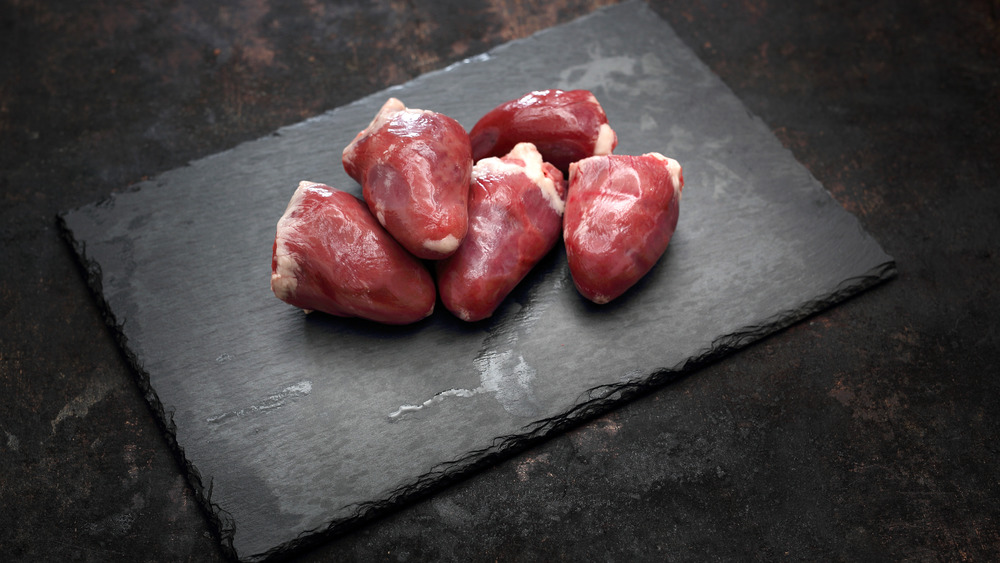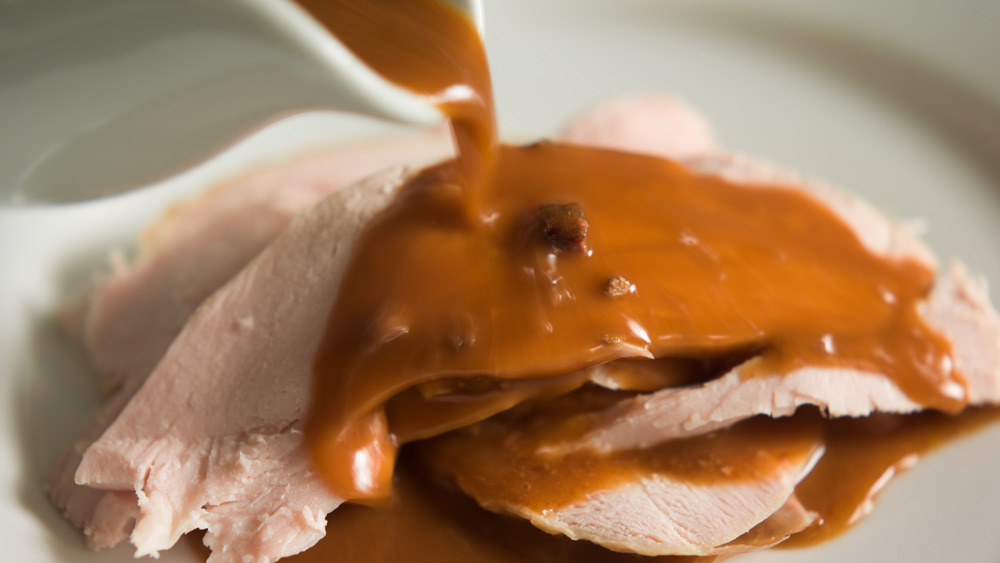Why You Shouldn't Throw Away Turkey Giblets
Why shouldn't you throw away the neck and giblets — the gizzard, liver, and heart — that are stuffed inside the carcass of your Thanksgiving turkey? To put it simply, and to borrow the pun in the title of a cookbook by Chris Cosentino, it's because they're "offal good."
"The heart, the gizzard — these are muscles. This is beautiful meat," Cosentino said (via Taste). "These are ingredients that when treated correctly can be turned into something very special." Detroit chef Les Molnar has a happy childhood memory involving giblets. His mother would add heart, liver, and kidney to her Thanksgiving stuffing, giving it a little something extra he described as "earthy."
Turkey giblets are also commonly used as the base for a flavorful turkey gravy. Taste suggests sautéing the giblets with vegetables, herbs, and turkey drippings, then thickening with flour or corn starch. You'll have a gravy that will rescue even the blandest turkey breast. (Taste advises that you remove the gizzard after cooking it in the gravy base because it's so tough. The gizzard, after all, is a muscular stomach that grinds up food for birds, according to Devour Asia.)
Giblets taste good and are good for you
Giblets not only taste good — or at least no worse than "earthy" — they're good for you, too. One cup of chopped, cooked gizzard has 44 grams of protein, or almost an entire day's supply. (That said, eating a cup of chopped gizzards sounds more like a middle-school dare than diet advice.) Gizzards also have healthy amounts of B vitamins and minerals (via SFGate). Liver is a well-known source of iron, as well as selenium, zinc, and more protein and B vitamins (via Better Food).
Many people in the "save the giblets" camp are from the nose-to-tail movement — a trend that says no part of the animal shall remain unconsumed (via Clean Eating). The movement makes sense because not wasting edible animal parts is both economical and environmentally friendly. But while appearing all frugal and responsible, chefs can also take on internal organs as a culinary challenge. Boston chef Jamie Bissonnette created a Bolognese sauce with duck offal as its base, for example (via Taste). Other chefs will admit they got into cooking giblets out of boredom, preparing them as an on-the-job snack because they didn't want to keep eating the same dishes they were making for customers.
Whether you add giblets to stuffing, turn them into gravy, or just fry them in a pan and pop them in your mouth like popcorn shrimp, you should give these innards a taste. That is, if you have the guts.

